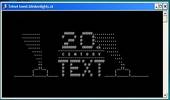Windows is sold in the form of DVDs and downloadable ISOs. The Windows DVD can be put into an optical drive for easy installation. However, with the advent of ultra portable devices and tablets that do not have optical drives, installing Windows from the setup DVD becomes a problem. This does not normally cause issues as Windows can be installed with the setup files on any working computer. You just need to copy paste the setup files from your DVD from a working computer with an optical drive on to your device without optical drive. However, in certain situations, you might be forced to install Windows from a bootable drive (such as when your system without an optical drive becomes unresponsive).
There are many other reasons why despite having an optical drive, you might want a bootable USB device for installing Windows. One is that installing Windows from a flash drive is a lot faster than that from a DVD. Creating a flash drive for installing Windows is not as simple as copying the setup files to it as it will not be bootable. To make it bootable, you need to use specific software.
This article describes the process to install Windows XP, Windows Vista, Windows 7, Windows 8, Windows 8.1, Windows 10 or Windows 11 from a USB device using a third party tool called Rufus.
 Before you begin, you must make sure that your flash drive has a storage capacity of at least 4GB (8GB for 64 bit and newer editions of Windows.) You also need to make sure that you have an ISO file of the Windows setup DVD with you. If you do not have the ISO file, then you need to create an ISO file from your setup DVD using a free program like ISOCreator.
Before you begin, you must make sure that your flash drive has a storage capacity of at least 4GB (8GB for 64 bit and newer editions of Windows.) You also need to make sure that you have an ISO file of the Windows setup DVD with you. If you do not have the ISO file, then you need to create an ISO file from your setup DVD using a free program like ISOCreator.
1. Download and install Rufus. You need to be in an Administrator account. The program runs perfectly on Windows 11, Windows 10, Windows 8.1, Windows 8, Windows 7, Windows Vista and Windows XP.
2. Plugin your USB device.
3. Start Rufus and locate your USB device in the Device: dropdown.
4. Select the Disk or ISO image option from the Boot Selection dropdown menu. Click on the Select button right to it to locate your Windows ISO image.
5. Give a name to your flash drive using the Volume Label option and leave all other settings unchanged.
6. Click on Start to format your USB device and extract all files of the ISO to it. This will delete all data on your USB device so make sure that it does not contain any important files.
7. After some time, the progress bar will reach the end indicating successful execution.
8. Now, you need to boot from the bootable USB device you just created to start the Windows installation process. If your computer is not booting from it at startup, you will need to change the boot order in BIOS settings and select USB drive as the first boot option. You must also make sure that your hard disk has enough free space to start the Windows installation process.
9. Install Windows by following the on-screen instructions.
There are many other reasons why despite having an optical drive, you might want a bootable USB device for installing Windows. One is that installing Windows from a flash drive is a lot faster than that from a DVD. Creating a flash drive for installing Windows is not as simple as copying the setup files to it as it will not be bootable. To make it bootable, you need to use specific software.
This article describes the process to install Windows XP, Windows Vista, Windows 7, Windows 8, Windows 8.1, Windows 10 or Windows 11 from a USB device using a third party tool called Rufus.

Steps to Install Windows 11, Windows 10, Windows 8.1, Windows 8, Windows 7 and Windows XP from USB flash drive
1. Download and install Rufus. You need to be in an Administrator account. The program runs perfectly on Windows 11, Windows 10, Windows 8.1, Windows 8, Windows 7, Windows Vista and Windows XP.
2. Plugin your USB device.
3. Start Rufus and locate your USB device in the Device: dropdown.
4. Select the Disk or ISO image option from the Boot Selection dropdown menu. Click on the Select button right to it to locate your Windows ISO image.
5. Give a name to your flash drive using the Volume Label option and leave all other settings unchanged.
6. Click on Start to format your USB device and extract all files of the ISO to it. This will delete all data on your USB device so make sure that it does not contain any important files.
7. After some time, the progress bar will reach the end indicating successful execution.
8. Now, you need to boot from the bootable USB device you just created to start the Windows installation process. If your computer is not booting from it at startup, you will need to change the boot order in BIOS settings and select USB drive as the first boot option. You must also make sure that your hard disk has enough free space to start the Windows installation process.
9. Install Windows by following the on-screen instructions.

 About
About



